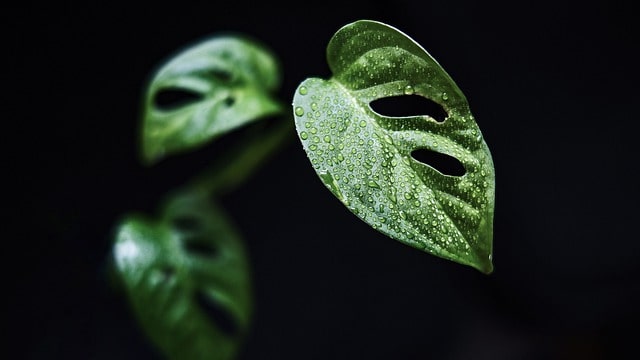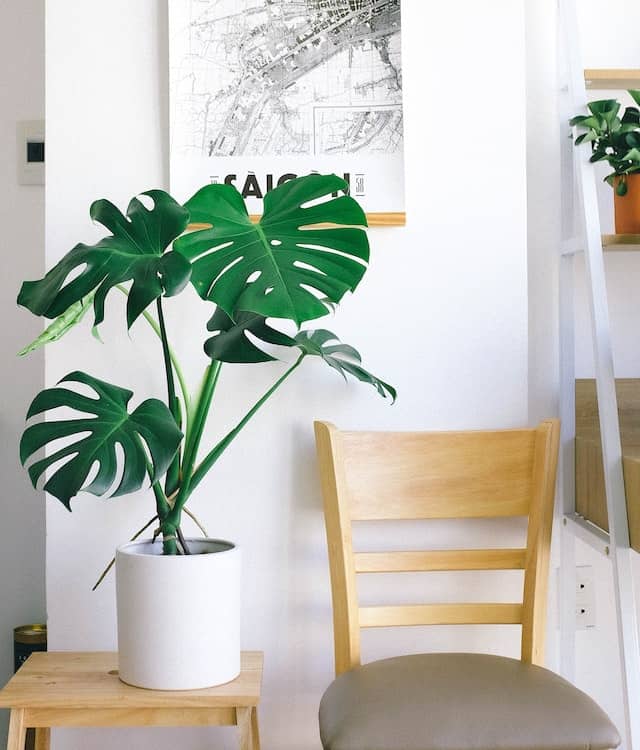In this comprehensive guide, we’ll cover everything you need to know about propagating Monstera plants, including techniques, care tips, and troubleshooting common issues.
Why Propagate Monstera?
Propagating Monstera not only allows you to create new plants for your home but also gives you the opportunity to share these beautiful plants with friends and family. Plus, it can be a cost-effective way to expand your indoor jungle!
Types of Monstera

Before you start propagating, it’s helpful to understand that there are several species of Monstera. The most common ones include:
Monstera Deliciosa: Known for its large, split leaves, this is the most popular variety.
Monstera Adansonii: Also called the Swiss Cheese Plant, it features smaller leaves with unique holes.
Monstera Pinanga: Less common, this variant has a different leaf shape but can be propagated in similar ways.
When is the Best Time to Propagate?
The best time to propagate Monstera is during the spring or summer months. During these seasons, the plant is in its active growing phase, making it more receptive to root development. However, if you find that your Monstera is healthy enough, you can propagate at other times of the year as well.
Methods of Propagating Monstera
There are primarily two methods of propagating Monstera: water propagation and soil propagation. Let’s go over each method in detail.
1. Water Propagation
Water propagation is a popular method because it allows you to visually monitor root development. Here’s how to do it:
What You’ll Need:
A healthy Monstera plant
A clean, sharp knife or pruning shears
A jar or glass container
Water (preferably distilled or filtered)
Steps:
Select a Stem Cutting: Look for a healthy stem with at least one leaf and a node (the small bump where leaves grow). Nodes are crucial, as they’re the areas that will develop into roots.
Make the Cut: Use a clean knife or pruning shears to cut below the node. A cutting of 4 to 6 inches is generally ideal.
Place in Water: Submerge the cutting in a jar of water, ensuring that the node is underwater while keeping the leaf above the waterline. It’s important to change the water every few days to keep it fresh and prevent rot.
Wait for Roots to Develop: Place the jar in indirect sunlight and be patient. In a few weeks, you’ll start to see roots forming. Once the roots are about 2-4 inches long, you can transfer the cutting to soil.
2. Soil Propagation
Soil propagation is another effective method, especially if you prefer your cutting to establish roots directly in the growing medium. Here’s how to do it:
What You’ll Need:
A healthy Monstera plant
A clean, sharp knife or pruning shears
A pot with drainage holes
Soil mix (aroid mix or a combination of potting soil, perlite, and orchid bark works well)
Steps:
Select a Stem Cutting: Just like in water propagation, choose a cutting that has a node and at least one leaf.
Make the Cut: Cut below the node with a clean knife or pruning shears.
Prepare the Pot: Fill a pot with your chosen soil mix, ensuring it’s loose and well-draining.
Plant the Cutting: Insert the cutting into the soil, burying the node about 1-2 inches deep. Gently pack the soil around it to support the stem.
Water and Care: Water the cutting lightly and place it in a warm, humid location with indirect sunlight. Keep the soil slightly moist, ensuring not to overwater.
Caring for Your New Cuttings

Once you have successfully propagated your Monstera, providing proper care is crucial for healthy growth. Here are some essential tips:
Light: Monstera prefers bright, indirect light. Too much direct sunlight can scorch the leaves, while too little light can hinder growth.
Humidity: These tropical plants thrive in higher humidity levels. Consider using a humidity tray or a humidifier if your indoor environment is dry.
Watering: Allow the top inch of soil to dry out before watering again. Overwatering can lead to root rot.
Fertilizing: During the growing season (spring and summer), feed your Monstera with a balanced liquid fertilizer every 4-6 weeks to support healthy growth. Reduce feeding in the fall and winter when the plant’s growth slows down.
Pruning: As your Monstera grows, regular pruning can help maintain its shape and encourage bushier growth. Remove any yellow or damaged leaves to keep your plant healthy.
Common Problems and Troubleshooting
While propagating Monstera can be straightforward, you may encounter a few issues along the way. Here’s how to troubleshoot common problems:
1. Yellowing Leaves
Cause: Overwatering or insufficient light can lead to yellowing leaves.
Solution: Ensure that you’re allowing the soil to dry out between waterings and that your plant is receiving enough indirect light.
2. Root Rot
Cause: Root rot is often caused by poor drainage or overwatering.
Solution: If you see that your cutting’s roots are brown and mushy, remove it from the pot, trim away the affected roots, and repot in fresh soil with good drainage.
3. Slow Growth
Cause: A lack of nutrients or insufficient light can cause slow growth in your Monstera.
Solution: Check that you are fertilizing during the growing months and that the plant receives enough light.
4. Leaf Curling
Cause: This can be a sign of underwatering, high temperatures, or pests.
Solution: Ensure consistent watering, check for pests, and provide a stable temperature environment.
Final Thoughts
Propagating Monstera is not only an enjoyable way to expand your houseplant collection, but it’s also a fulfilling project that allows you to connect with nature and nurture new life. Whether you choose water or soil propagation, the key factors are patience, care, and attention to your plant’s needs.
With the right knowledge and techniques, you can successfully propagate Monstera and enjoy the rewards of watching your new plants thrive. Share your propagation journey on Pinterest; you never know whom you might inspire on their own plant journey! 🌱
Share Your Experience
If you’ve propagated Monstera before or are currently trying it out, consider documenting your process. You can share tips, photos, and even challenges you faced. Creating a Pinterest board dedicated to houseplant propagation can be a beautiful way to showcase your journey and help others find a green thumb!
Remember, plant care can vary from person to person; what works for one might not work for another. Stay curious, share your learnings, and enjoy the journey of growing your Monstera collection!





